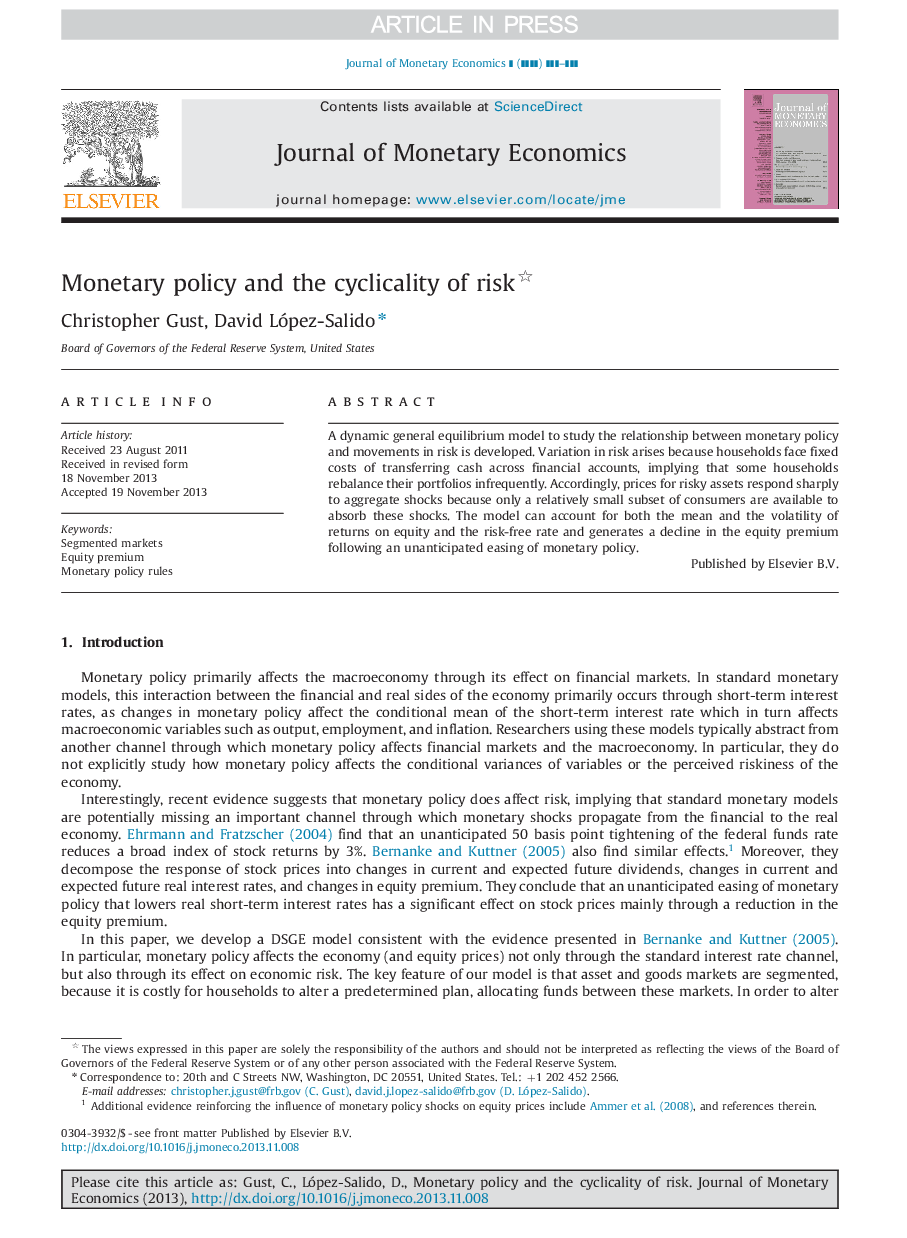| Article ID | Journal | Published Year | Pages | File Type |
|---|---|---|---|---|
| 967454 | Journal of Monetary Economics | 2014 | 17 Pages |
Abstract
A dynamic general equilibrium model to study the relationship between monetary policy and movements in risk is developed. Variation in risk arises because households face fixed costs of transferring cash across financial accounts, implying that some households rebalance their portfolios infrequently. Accordingly, prices for risky assets respond sharply to aggregate shocks because only a relatively small subset of consumers are available to absorb these shocks. The model can account for both the mean and the volatility of returns on equity and the risk-free rate and generates a decline in the equity premium following an unanticipated easing of monetary policy.
Related Topics
Social Sciences and Humanities
Economics, Econometrics and Finance
Economics and Econometrics
Authors
Christopher Gust, David López-Salido,
